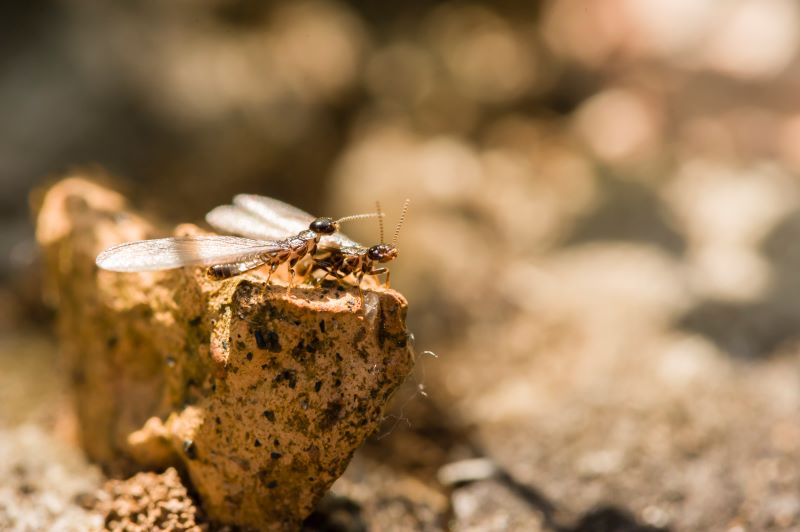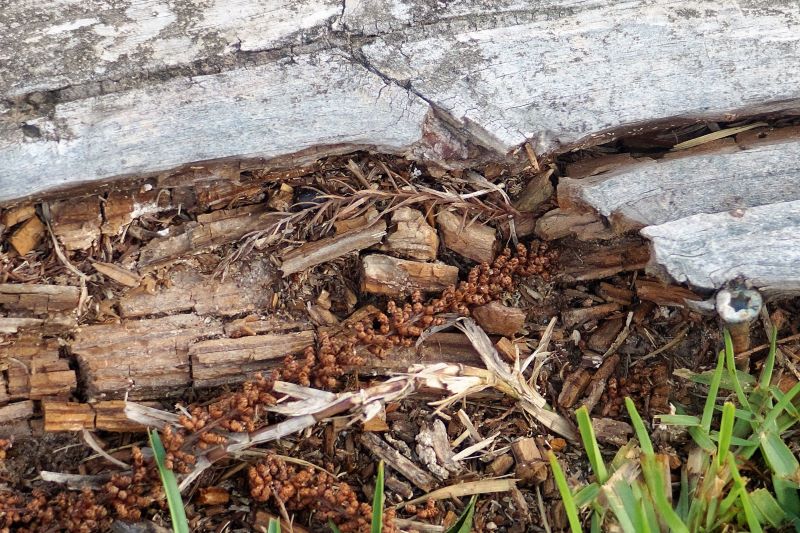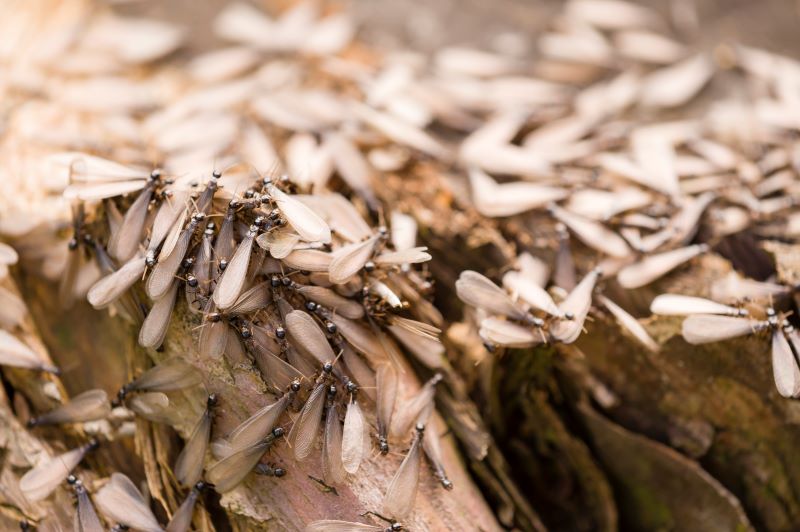READ ALL ABOUT IT
CHECK OUT OUR BLOG FOR CHICAGOLAND & SOUTHERN WISCONSIN
When Should I Be Worried About Termites?
When should I be worried about termites? By the time you notice them, it might be too late. If you can not identify the signs of a termite infestation like termite droppings, the infestation can quickly spiral out of control leaving you with thousands of dollars in damage or even losing your house altogether. Termites are a serious threat to your house and your family.
Termites are insects that feed on dead plant matter like woodchips, decayed wood, and leaves. Like most insects, they look for a warm refuge with lots of food to outlast the winter. Unfortunately, the perfect refuge for these pests could be your home and the wood that supports your home.
You are not safe in the spring either. The springtime is even worse. Termites swarm during these months, looking to establish new nests in homes like yours. Every year termites cause 5 billion dollars of home damage every year. In this article you will learn how to answer the question, “When should I be worried about termites?” and how to identify the signs of a termite infestation like termite droppings and damage.
Termite Droppings
“When should I be worried about termites?” you might ask. The number one sign of a termite infestation is termite droppings. Most termites do not need to leave their nest, meaning unless a swarmer has left to start a new nest, you will likely never see the insect until it is too late. Fortunately, termites do not like storing termite droppings in their nests.
Have you found mysterious piles of sawdust or pepper around your home? These piles are likely termite droppings. The appearance of termite droppings is a surefire way to know that you have an active termite infestation. These piles will be located near the nest with a hole nearby. The termites use this hole to keep the termite droppings out of their nest, so if you can find the hole you may find termites.
If you do not see an active nest, this does not mean the nest is gone. It means the termites have done more damage. The termites have most likely moved onto another area of your home.
The type of termite will affect the appearance of the termite dropping. The Drywood termite will leave droppings as described above. They will appear as piles of sawdust or salt and pepper-like pellets near your walls. Subterranean termite droppings look a little different. You might find long, thin mud tunnels running up your walls and foundation. These termites use their droppings in the construction of their nest, so it is impossible to tell their nest from the termite droppings.
What Does Termite Damage Look Like?
What does termite damage look like? Termites cause damage by eating through wood portions of a home. The biggest subterranean termite colonies will eat through a pound of wood per day and damage can go unnoticed for years. If you are worried about a termite infestation, look for these signs of damage.
Water Damage or Termites?
What does termite damage look like? A termite infestation looks a lot like water damage. Buckling wood, swollen floors, and swollen ceilings may seem like water damage, but termites can cause those exact issues as well.
If you are unsure if water or termites have caused damage to your home, take a closer look. Termite damage will leave wavy grooves and hollowed-out sections on the surface of the wood. Water will cause the wood to darken and leave it with a musty smell.
It is possible to have both water damage and a termite infestation. Damp wood draws certain types of termites. Damaged wood is a buffet to termites. “When should I be worried about termites?” If you see this kind of damage without any water, it is time to start worrying.
Stuck Doors and Windows
The wood around windows and doors is an easy first target for termites. As the termites eat through the wood, the door or window may begin to warp. As it warps, the harder it will be to open. If you find your doors and windows are harder to open than usual, the answer to the question, “When should I be worried about termites?” might be now.
Tap on Wood
Use a heavy object to tap on the wood in your home. If it makes a hollow sound, you might be struggling with a termite infestation. The termite eats away at the wood beneath the surface leaving open spaces.
Paint
Bubbling and peeling pain could be a sign of a termite infestation. As the termites chew away at the wood underneath, they disturb the paint above. You might find dented areas as well. If you see long, winding indents, this might be a sign of tunneling termites. You might ask yourself, “When should I be worried about termites?” If you see winding lines in your wood, that is a surefire way to know that you need to handle an infestation.
Termite Infestation
Termite infestations show more signs than termite droppings and damage. You might be lucky enough to see a termite for yourself. One termite means that there are more hidden away. If you see a termite, it is likely a swarmer. A swarmer is a termite that has left the nest to establish a new nest. As they are the reproductive members of the termite colony, they are looking for a mate.
Termite swarmers can be found near light sources. You are more likely to find them by windows and doors. You might find some discarded wings as well. Swarmers lose their wings once they find a mate.
Do not mistake these termites for flying ants. Termites have straighter bodies and an even pair of wings.
Take Control Before It Is Too Late
Termites are not to be taken lightly. They can eat away at your home until it collapses. “When should I be worried about termites?” At the first sign of termites, you need to worry about termites. By the first sign, the termites will have already caused hundreds of dollars in damage.
To take control of your termite problem, you need an expert exterminator.
Skeeter Beater knows how to handle termites. We’ll locate and kill the termites so you can rest easy in a termite-free home. “When should I be worried about termites?” With Skeeter Beater, you’ll no longer have to worry about the termites in your home.



